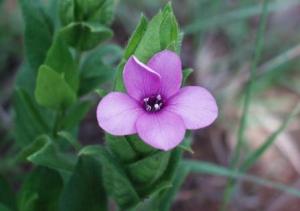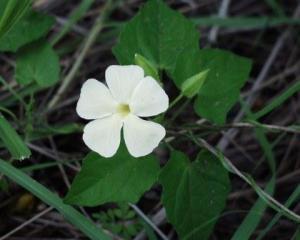Order: Plantae
Family: Acanthaceae
Species:
- Barleria ovata
- Blepharis subvolubilis subvolubilis
- Crabbea angustifolia
- Crabbea hirsuta
- Crossandra greenstockii
- Dyschoriste burchellii
- Hypoestes forskaolii
- Justicia anagalloides
- Ruellia cordata
- Ruellia stenophylla
- Thunbergia atriplicifolia
- Thunbergia neglecta
The plants can be shrubs, climbers or herbs. No stipules present on the opposite leaves. Inflorescence may often have large leavy bracts.
This is an important familyfor me for various reasons. Firstly, two of my favourite plants occurs on this list, namely Crossandra greenstockii and Blepharis subvolubilis subvolubilis. They were some of the first plants that caught my eye when we moved here. Secondly, two of my favourite caterpillars (Rhanidophora phedonia and Rhanidophora ridens) feed on Thungergia atriplicifolia. Thirdly, they are just so neat and pretty!
Barleria ovata
Often called Grassland Barleria or Bush Viola (Bosviooltjie in Afrikaans). The bright purple flowers adorns the veld late summer to early autumn (Dec-Mar).
Blepharis subvolubilis subvolubilis
The toothed leaves are leathery and glossy.
Crabbea angustifolia
Lanceolate leaves.
Crabbea hirsuta
Perennial herb. General name Prickle Head. Inflorescences densely clustered, sessile. Flowers white with a yellow centre, borne amongst large leaf-like bracts with spiny margins
Crossandra greenstockii
The photos don’t do justice to the brilliant orange-red colour of this exquisite veld flower. Bushveld Crossandra or Rooiblom in Afrikaans.
Dyschoriste burchellii
(was Chaetacanthus burchellii). Many green to reddish stems, slightly hairy throughout.
Hypoestes forskaolii
White Ribbon bush.
Justicia anagalloides
Abundant on the property. Small plant, small lovely white flowers with pinkish nectar guides.
Ruellia cordata
Ruellia stenophylla
Thunbergia atriplicifolia
Natal Primrose. Abundant on the property. Apparently it is utilized in traditional medicines as a love potion, although I could not get a reference which plant part are used. Green fruits are used for a hair wash. Host plant for Rhanidophora phedonia and R. ridens (Dice Moths). We had a huge veld fire last year and I found no Dice Moth larvae after that. May they return soon… Rhanidophora ridens is rare on our property, while R. phedonia is abundant. I also found and raised two caterpillars of Owlet Moths (Noctuidae). The moths are very much alike, but the caterpillars were not exactly the same.
Thunbergia neglecta
Creeper. I have found it in only two places on the farm.















































